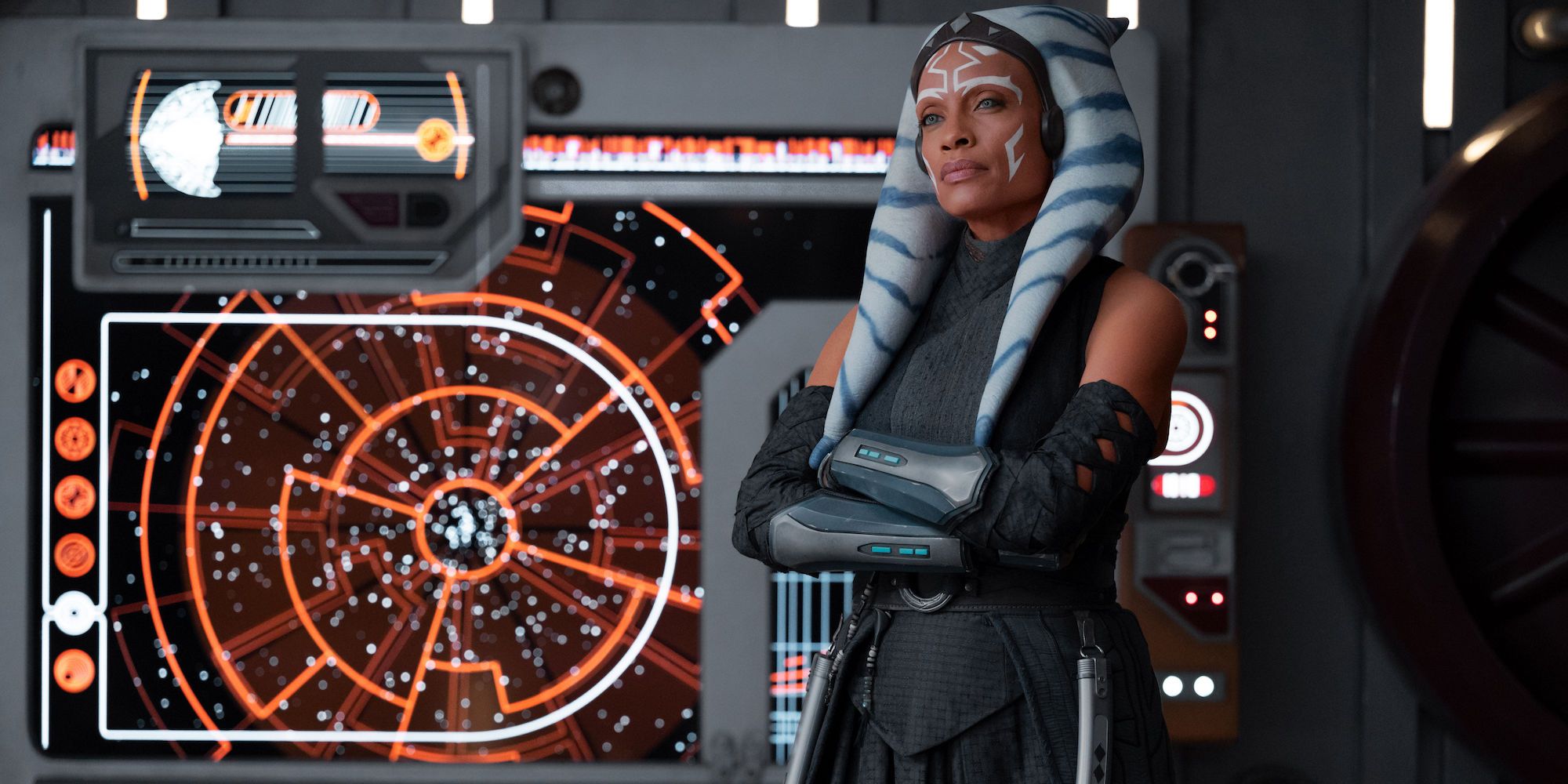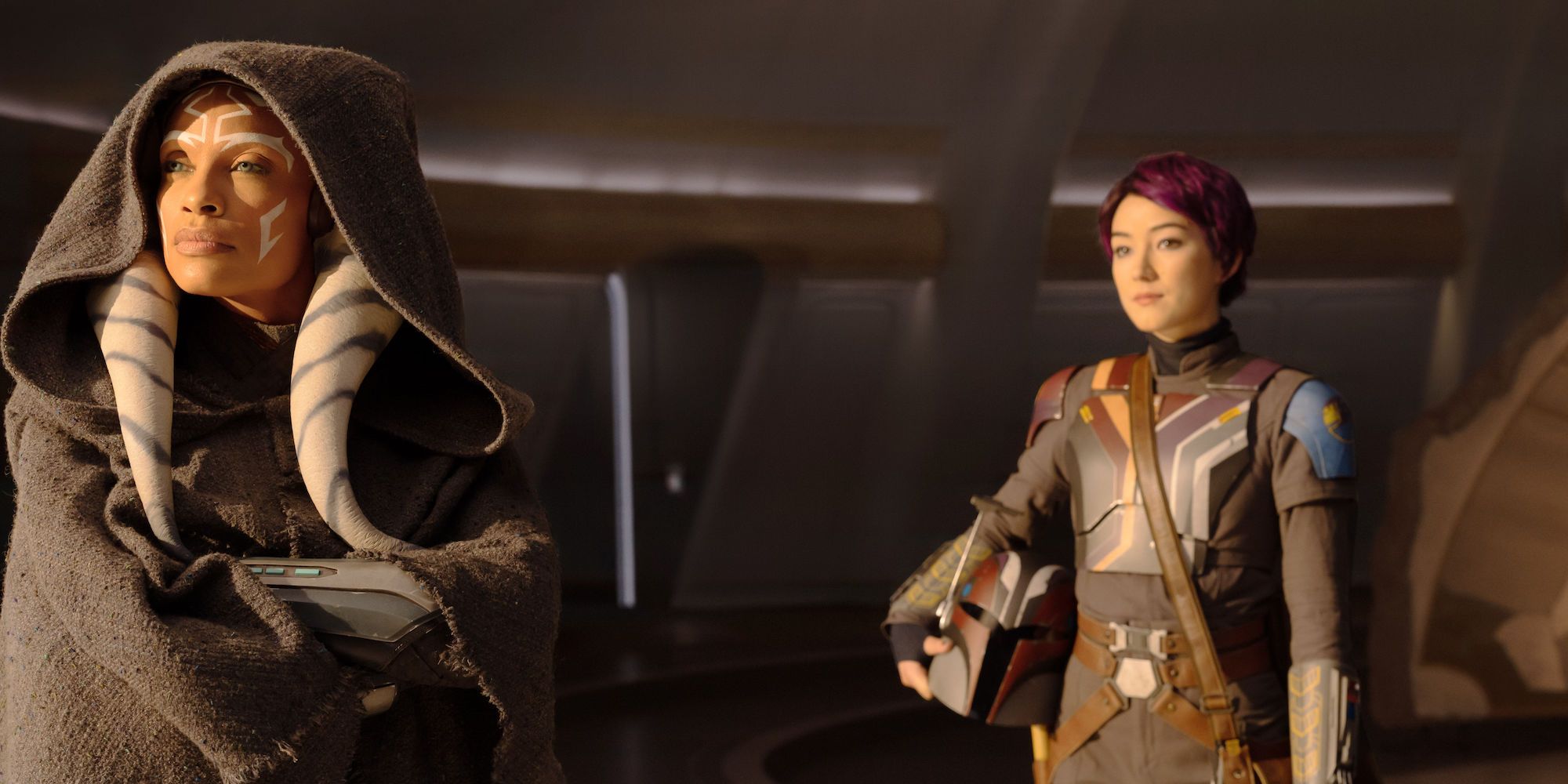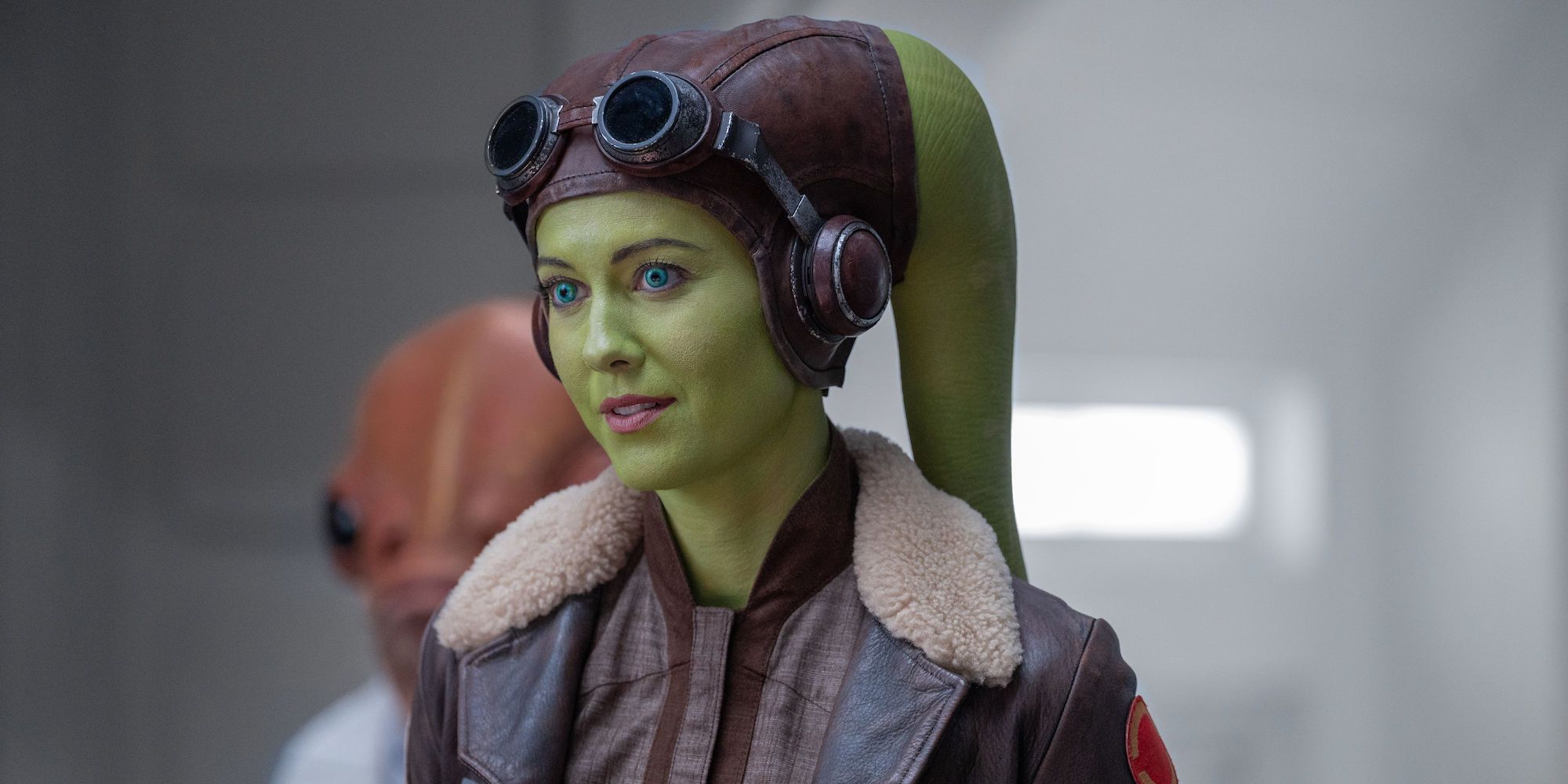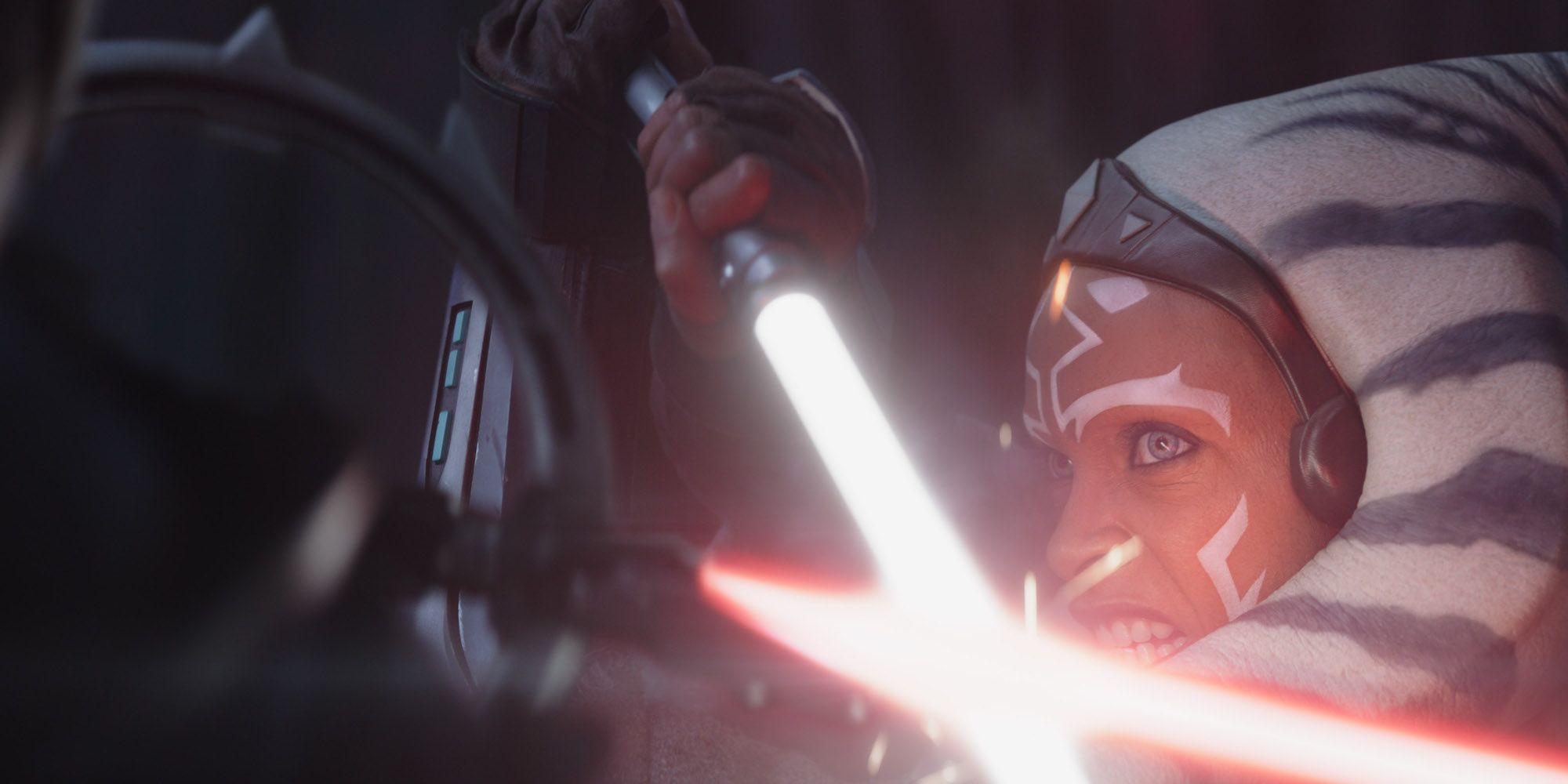Summary
- The live-action Ahsoka series has created excitement among fans, but viewers unfamiliar with the animated series may struggle to understand certain character motivations and references.
- Despite being visually appealing, some may question the need for a live-action adaptation when animation offers more immersive and exciting possibilities.
- Rosario Dawson's portrayal of Ahsoka is worth the price of a subscription, as she brings years of character development and audience engagement to life, alongside other talented actors in the Star Wars universe. However, the writing in the first two episodes is generic and lacks depth, leaving room for improvement in character development and storytelling.
Editor's note: This piece was written during the 2023 WGA and SAG-AFTRA strikes. Without the labor of the writers and actors currently on strike, the series being covered here wouldn't exist.
We finally arrived at the live-action Ahsoka series by Dave Filoni. The Rosario Dawson-led series is one of many projects in the Star Wars universe that has garnered almost universal excitement among fans. As ever-expanding as the franchise gets, there is still much to look forward to. But is the excitement worth it? It's hard to say after only two episodes Disney+ provided journalists and critics. But this causal fan says there is much to hope for and lots of promises for Filoni to fulfill.
In episodes 1 and 2, the chess board is set. Our titular lead (Dawson), a solo Jedi, is on the hunt for a map. This map will allegedly direct her towards a massive threat and a great ally, both lost in the decisive battle between the Jedi and the Empire. Her search, alongside her trusted droid Huyang (David Tennant), is spurred on by the rumors and happenings from the other side. As Ahsoka and any of the few remaining Jedi know, squashing any remnants of the Empire is of the utmost importance.
For newbies only engaging with the “MandoVerse” stage of the Star Wars franchise, that being any live-action series released after The Mandalorian, Ahsoka is perhaps the first series to have a real barrier for entry. The content of the series, especially the opening episodes, is based on the events of Dave Filoni’s two animated series, The Clone Wars and, more specifically, Star Wars: Rebels. Character motivations and the driving force for the narrative can be easy to interpret for the average TV viewer, but there are questions when certain unseen characters and events are referred to. As with many Disney projects these days, Ahsoka requires homework. And lucky for us that homework is a few clicks away on Disney+.
Now, the one thing that has been a head-scratcher for me is, if this series ties directly back to an animated series, why leap to live-action? Visually, Ahsoka is fine. Based on the first two episodes, the series is unmistakably a Star Wars series. The artificiality of the world is intertwined with the tactical realness of a few set pieces and on-set locations. But animation is a medium that can visually do things that live action cannot, and it is far more immersive and exciting than any VFX made to feel real. At the same time, there is nothing outright negative to say about the visuals; as palpable and expected as they may be, the series does capture the essence of Star Wars very well. Lucasfilm has nourished a solid and effective visual and production team that have created a seamless sci-fi fantasy with its comprehensive visual language and iconography. However, the opportunity to expand the story of Ahsoka and her friends in animation looms large over this series.
The most compelling thing about Ahsoka is seeing the lead character come to life in live-action. Her appearances in The Mandalorian and The Book of Boba Fett were mere teasers for what was to be a grand entrance to the live-action world. Rosario Dawson was manifested for this role by many who watched the animated series. In the role itself, she is at home. Behind the pounds of makeup and the massive headpiece, Dawson moves with a confidence that can only exist if you know you were born to play a role. Dawson can go to emotionally profound places with her character and bust out some great poses in her action scenes. Seeing Dawson take years of character development and audience engagement and embodying it in a live-action interpretation that honors all that Ahsoka is and will be for years to come is worth the price of a subscription.
Furthermore, she has chemistry with nearly everyone she interacts with — most notably other fan favorites Sabine Wren (Natasha Liu Bordizzo) and Hera Syndulla (Elizaveth Winstead). Ahsoka is worth the effort to make in live-action since it means these exceptionally talented actors get to play in the Star Wars sandbox. The not-quite newcomer Liu Bordizzo is poised to be the next best ingénue to take off from the franchise; meanwhile, millions of Star Wars fans will revisit decades worth of work from Dawson and Winstead. Ahsoka quietly became the first woman-led Star Wars live-action series and the first to feature three women as the top-billed cast members, and from what we can see in these first two episodes, these three are well worth the commitment.
Filoni’s writing in the first two episodes is very generic, but that is expected to set up chess pieces. Everyone is mobilizing to find the MacGuffin and face the consequences or rewards of where it leads them all. For how slowly the plot unravels in these episodes, however, many opportunities are lost to build compelling characters and interactions while setting up the story and the inevitable conflict of the series. Most interactions are smothered by missing context and exposition. The story has an understated sense of epicness, but Filoni cannot rise to the challenge with these opening episodes, only ever scratching the surface of what the series can be. One of the core themes of this series becomes quickly apparent, which is the theme of masters and apprentices. This theme is not entirely uncommon in the Star Wars franchise but remains compelling.
Ahsoka and Sabine are positioned opposite the late Ray Stevenson’s Baylan Skoll and his apprentice Shin Hati (Ivanna Sakhno). It’s clear that the two masters have distinctive approaches to their apprenticeships, but how Filoni treads this familiar yet new track will make or break the series. One can only hope that the deathly tone can be livened up with genuinely inspired humor and character development that goes deeper into what makes these characters so likable and worth rooting for. It cannot simply be that they are on the right side and their reason for their journey is more honorable than their adversaries. And at present, the translation from animation to live-action falters as the characterization and a few lighthearted moments come across as a bit stiff and unnatural. Growing pains are typical, but let's hope episodes 3-8 move away from the exposition and thoroughly explore the interesting dynamics at play.
Following Dave Filoni from Clone Wars and Rebels is composer Kevin Kiner, whose score is a big part of the first two episodes. The Star Wars theme, made omnipresent by John Williams, still lingers, yet Kline makes strides in creating an affecting and enticing viewing experience with a score that complements the space opera genre. Even more impressive is that Kline crafts a score that feels specific to this series, giving it a touch of individuality that is otherwise nowhere to be found – for now.
Upon the announcement that the Ahsoka series would exist as a direct sequel to Rebels and alongside the aforementioned live-action series, and that the story would culminate in interconnected stories for a “climactic story event,” my mood dampened a little. Only because Ahsoka is already so tied to Star Wars lore as she was the padawan to one Anakin Skywalker, and so her fate has always been sealed to Star Wars canon. However, that doesn’t mean that an original story, separate from that canon, could not still exist harmoniously with everything else. The story here requires a bit of homework, and that can be a bit off-putting for newcomers eager to dive into the world of Star Wars. There is also a lot to be gained by exploring new threats and paths for development for a character like Ahsoka. But based on the first two episodes, it appears that Filoni may successfully make Ahsoka a worthwhile endeavor and not just another cog in the interconnected Star Wars machine.
Ahsoka premieres on Disney+ Wednesday, August 23 and will air weekly until October 3.





